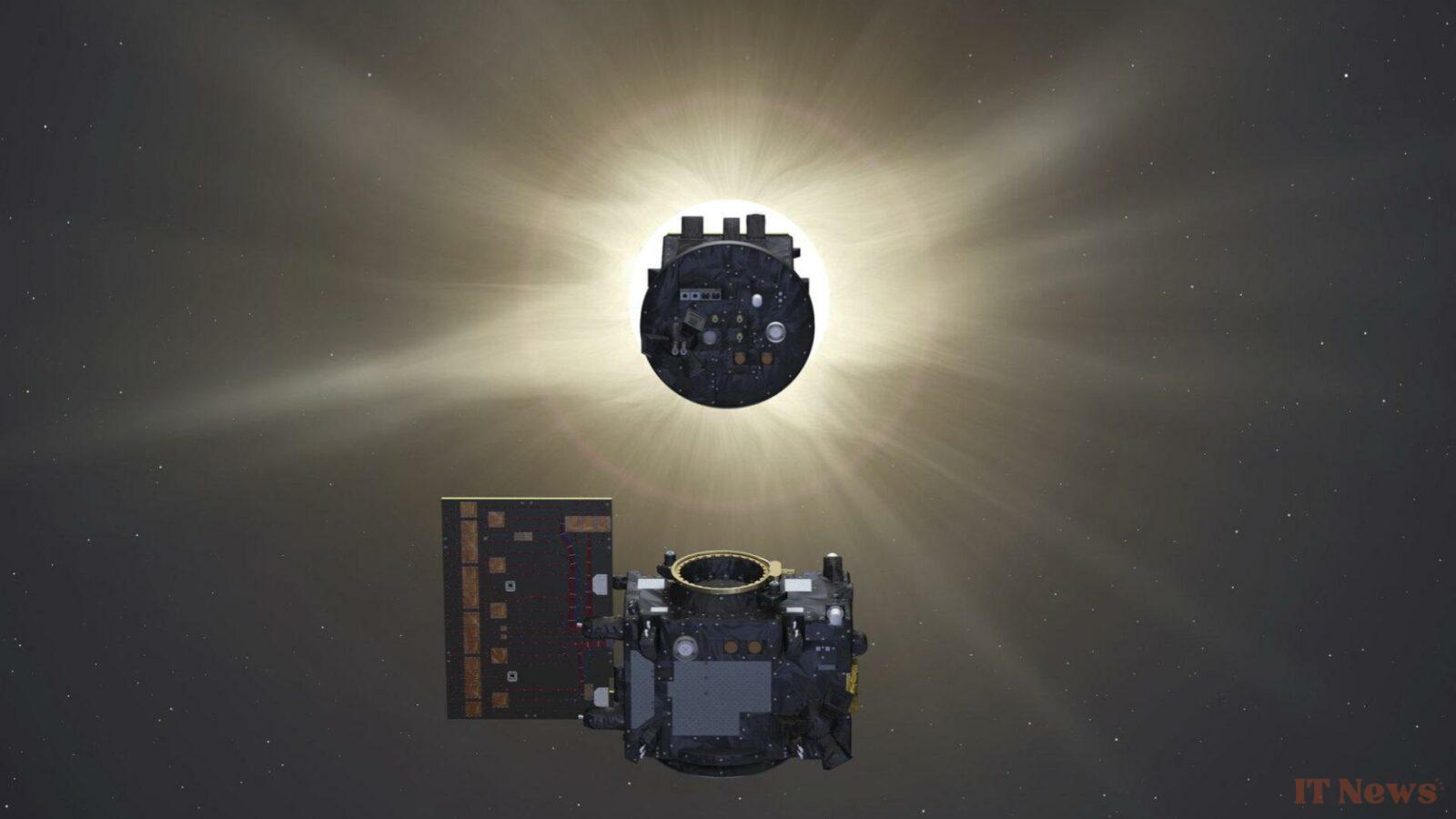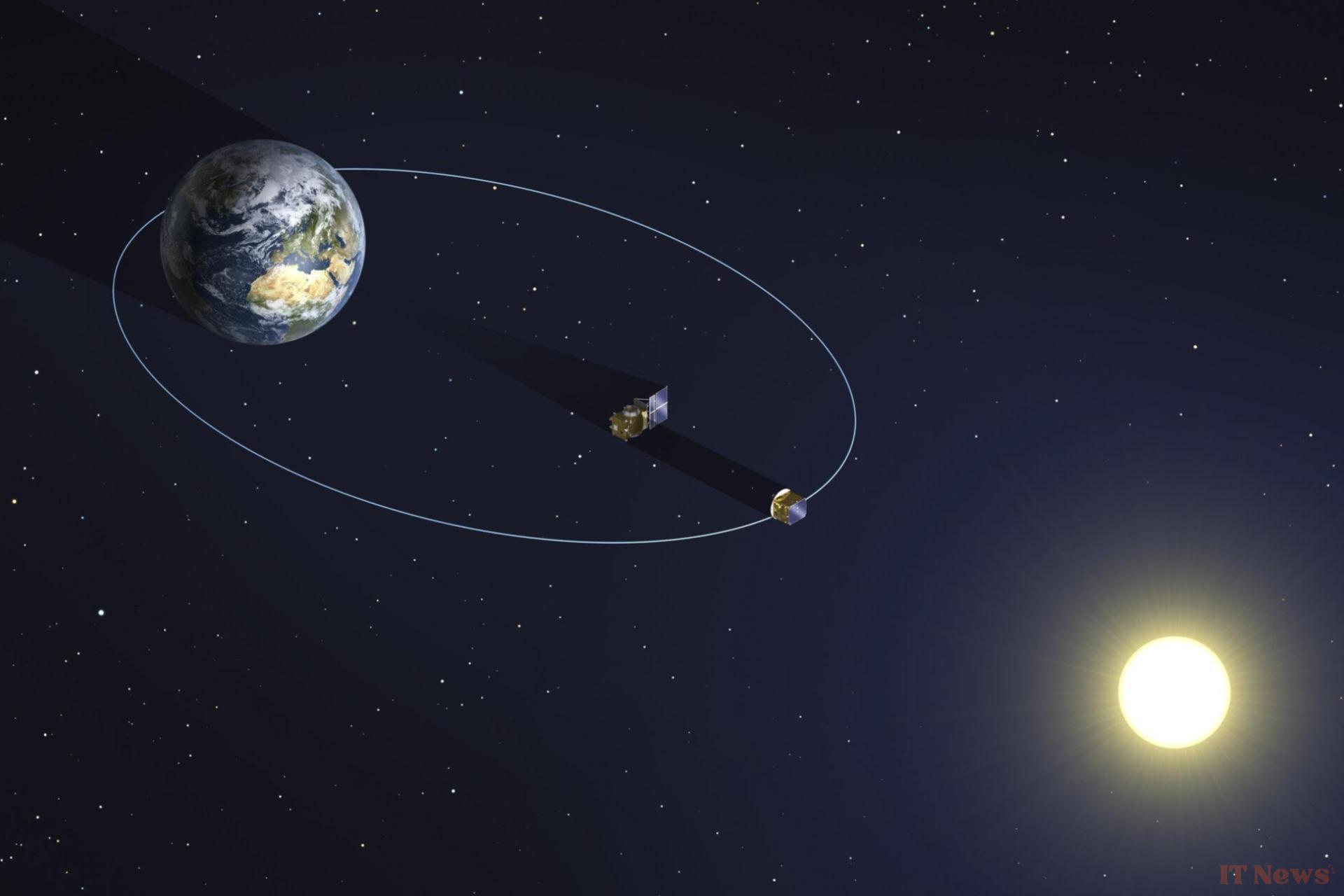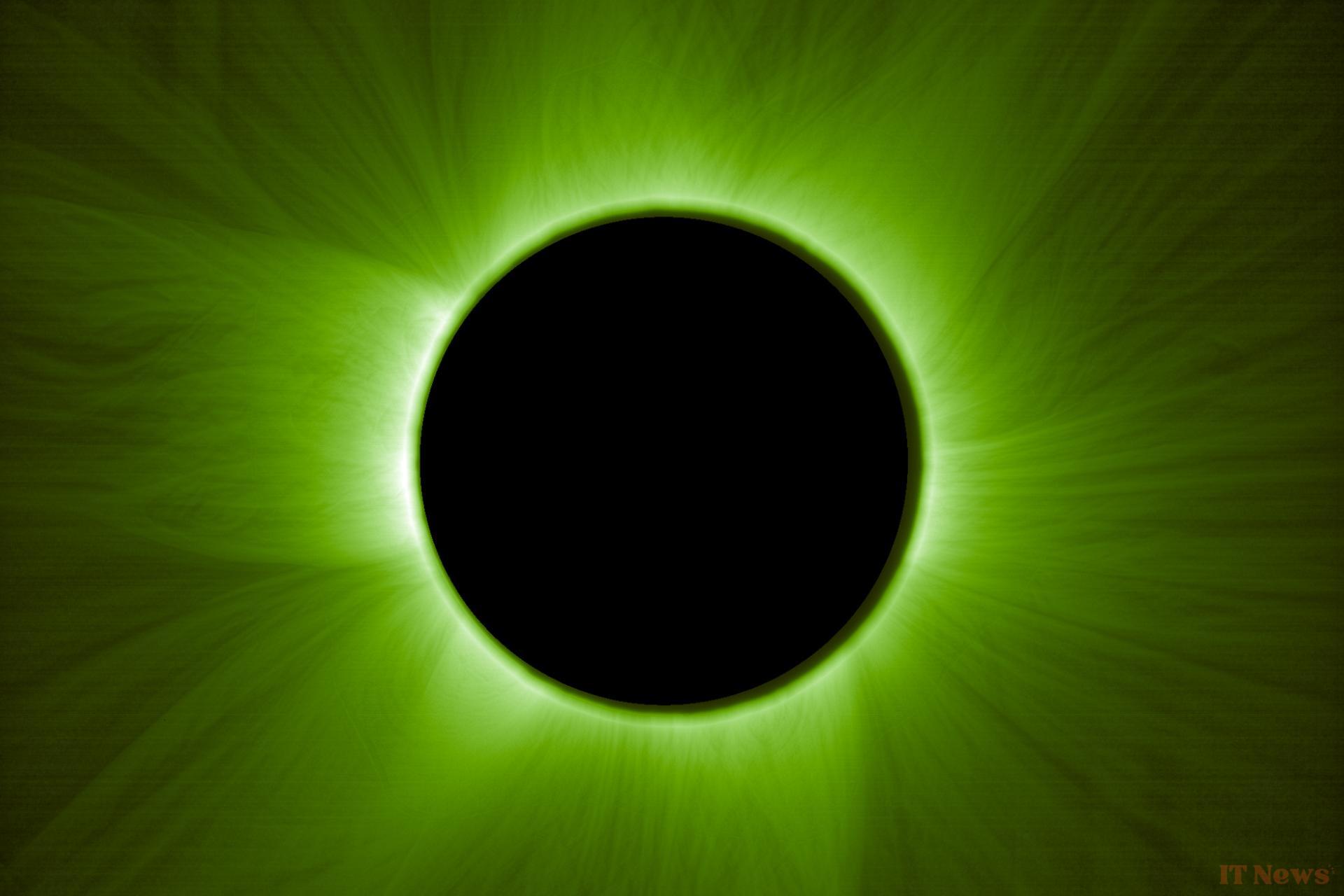In December 2024, the European Space Agency launched its PROBA-3 mission, a marvel of engineering designed to observe artificial solar eclipses. Six months after its grand launch, it has just unveiled its first photos, to the delight of astronomers.
Solar eclipses, which occur when the Moon blocks the Sun by positioning itself precisely between Earth and our star, are magnificent spectacles, both for individuals and researchers. For the latter, they represent a rare opportunity to observe otherwise invisible details of the solar corona – a veritable goldmine of information on the functioning of this star which, paradoxically, remains relatively poorly understood in many respects.
An artificial eclipse on demand
The problem is that eclipses, particularly total ones, are both relatively rare and ephemeral. This is unfortunate, as it greatly limits observation opportunities and the collection of data that could lead to remarkable advances in astrophysics.
This is why ESA has designed PROBA-3, a pair of probes whose cooperation makes it possible to generate artificial eclipses. On one side, a coronagraph, a device packed with instruments specifically designed to observe radiation from the solar corona. On the other, the occulter, whose mission is to mask the solar disk so that only the corona is visible – exactly as the Moon does with the Earth during natural eclipses.
By proceeding in this way, it is theoretically possible to obtain artificial eclipses that are almost perfect and, above all, extremely long. The observation window covers a period of six hours, compared to a few minutes for natural eclipses, and this is repeated every twenty hours – with all that this implies for the quantity of usable data.
An orbital ballet with extreme precision
But to achieve this, the two machines must are moving in close formation in extremely precise orbits. They must stabilize 150 meters apart, so that the 1.4-meter disc of the occulter projects a shadow of 5 centimeters precisely in the middle of the optical system of the coronagraph. All this with a margin of error of less than a millimeter. And this is anything but easy to accomplish with two devices operating at an altitude of more than 50,000 kilometers.
The two companions are in fact constantly subjected to external forces (gravity, radiation pressure, etc.) that threaten the stability of the formation. In addition, after each orbit, the coronagraph and the occulter move slightly apart – an inevitable outcome when two vehicles are not positioned in exactly the same orbit. They must therefore rendezvous and reestablish their formation precisely at each rotation, which massively complicates operations.
To address this unprecedented problem in the history of aerospace, ESA had to innovate. Its engineers designed a procedure that is unique in the world, involving communication, control, propulsion, and targeting elements.
The ground control center begins by determining the position of the two satellites and instructs the thrusters to initiate the rendezvous procedure. This initial maneuver must be carried out with impeccable timing, so that the orbits of the two vehicles change as little as possible in relation to each other. Otherwise, a progressive drift would be introduced, making each subsequent rendezvous even more difficult.
Once the two probes are relatively close, a hybrid autonomous control system, capable of managing both vehicles simultaneously, takes over. It is completely disconnected from the ground infrastructure to prevent telecommunications latency from introducing problematic errors.
This system begins by requesting a pair of cameras located on the occulter. In practice, this pair acts as a viewfinder that allows the device to precisely lock onto a set of luminous markers positioned on the coronagraph. A sighting system composed of a laser and a reflector then takes over to manage the final adjustments. From there, a set of complementary sensors constantly monitors variations in brightness to ensure the formation remains stable over time, while the propulsion system adjusts the position of the two vehicles based on orbital parameters.
It is a true engineering marvel, whose design required nearly 15 years of hard work. And their labor has finally been rewarded. On Monday, June 16, ESA announced that PROBA-3 had produced its first-ever artificial eclipse.
First-of-its-kind images of the solar corona
On this occasion, the coronagraph activated its instrument cluster, called ASPIICS, for the first time. While its companion remained perfectly stoic in front of our star, it was able to capture a wide range of images of the corona, from the visible to the infrared and polarized light. The resulting images are extremely valuable, as they can provide astronomers with information on a multitude of variables and phenomena associated with the solar corona.
The first, in dark green, shows, for example, ionized iron, having lost its electrons due to the extreme temperature. It can be used to reveal the hottest areas of the corona, as well as violent phenomena such as solar flares. The second image, in yellow, represents the helium concentration. In particular, we can see a solar prominence, a huge loop of plasma that stretches from the star's surface under the influence of the magnetic field.
And these are just a few isolated examples: during this first observation, the probe produced numerous images, each providing valuable information on a different parameter of solar science.
A taste of a scientific turning point
The icing on the cake is that this was only a test, and PROBA-3 has not even begun its actual scientific campaign yet. Before getting there, the ESA teams will have to make a series of observations to verify that all the instruments are working as planned. They will then need to rigorously calibrate them so that future data is as accurate and representative as possible.
Once this process is complete, the two spacecraft will be able to begin capturing eclipses every twenty hours, generating an unprecedented data stream. It will be exciting to follow ESA's work on this topic, and to examine the conclusions researchers will be able to draw by cross-referencing this information with that reported by other spacecraft, starting with the Parker and Solar Orbiter solar probes. Together, these three formidable devices could well usher in a new era of solar science.
"A new era for solar science": ESA captures the first images of a Sun's pole





0 Comments